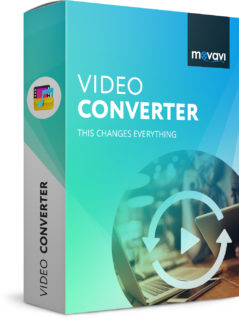The rapid growth in the ecommerce industry, in many ways, is also a result of the level of confidence that people have in the online payment mechanisms. eCommerce websites that are able to showcase their use of the best in class security features, in terms of payment processing, as well as customer data privacy, are on track for success at a scale.
A bit on ecommerce security
Regardless of the scale of any ecommerce enterprise, what makes them such an appealing target for cybercriminals are the volume and value of data they host. Hundreds of customers share their personal details, banking information, and other useful data (that is supposed to remain confidential) to register with, use, and get the best of ecommerce services.
Thousands of ecommerce-related cybercrimes take place on a daily basis, with even giant ventures, like eBay, falling prey to these attacks. Online security is, thus, an aspect where compromises should never be made on. Sufficient resources should go into tightening the security of online business platforms to their utmost.
The following is an elaborate list of some of the most quintessential security features that every ecommerce platform should possess:
Go for layered security
According to cyber-security experts, the best method to ensure that an ecommerce platform is safe from cybercrimes is by going for a multi factor authentication mechanism. Adding layers to the security protocol makes the security tougher to breach, and the violation endeavor more time-consuming.
This, in turn, discourages hackers from targeting your ecommerce website.
For instance, a firewall for the website’s server is common and necessary. However, it is wise to enhance its utility by preparing a detailed contact form and necessitating strong passwords from registered users that contain combinations of uppercase and lowercase letters and numbers.
SSL certificates: a must have
When sensitive information is being exchanged, the exchange taking place between the internet browser of the end-user and the website needs to be secured. SSL or Secure Sockets Layer encrypt these communications so as to secure them from unauthorized access.
Installation of SSL certificates, along with other protocols mentioned in the Payment Card Industry Data Security Standard, have been made compulsory for ecommerce entrepreneurs, who are lawfully held responsible for securing the information provided by customers.
These certificates can either be availed for free or via paid subscriptions, depending on the agency in charge of installing these certificates.
Adopting VPNs
Public networks are accessed by large numbers of people, and hence, always on the hit list of cyber criminals. These networks might not be the safest option for operating an ecommerce platform.
Adopting a Virtual Private Network that is equipped with offsite servers and secures communications via encryptions is a much smarter decision when it comes to safeguarding online transactions.
Encryptions are of paramount importance because they do not allow external online parties from actively or passively involving itself in communications between websites and end-user servers.
The cost of availing VPN services depends on the mode of services that you have opted for. Open-VPN and SSL-VPN are two cost-effective security options.
Security auditing
Frequent security checkups and audits are recommended for sustaining and bolstering your ecommerce website’s safety-net. Audits help weed out potential threats that may have found their way onto these portals.
It is, thus, a good idea to eliminate records of past transactions, just like it’s done by new online casinos and apps. Since these portals deal with round-the-clock cash flow, they take security concerns rather seriously to ensure that their clients’ information is safeguarded properly.
Their tech teams are always on guard regarding malicious attempts made on their servers.
Protection against DDoS targets
DDoS stands for Distributed Denial of Service, a form of cybercrime that has kept website security teams awake at night many times. Moreover, they keep adapting to more complex versions so as to dodge measures that are generally employed against these attacks.
Cloud-based DNS facilities that come equipped with transaction provisions help guard websites against DDoS attacks by removing suspicious or unnecessary traffic.
Investing in an efficient service that fights DDoS attacks is a much more pocket-friendly move than trying to tackle them on your own. Not only do DNS services safeguard ecommerce websites, but they also provide 100% DNS guarantees that enable more reliable communications between the website and servers.
Concluding remarks
In order to ensure long-term success for an ecommerce platform, its website security must be the first base covered during development. It is one of the most important pillars that hold these platforms up and should, thus, be updated, maintained and checked religiously.
Whether it’s a multi-brand online retail store, an online service provider, or a thriving online casino, you need to ensure the best of information security, always.








